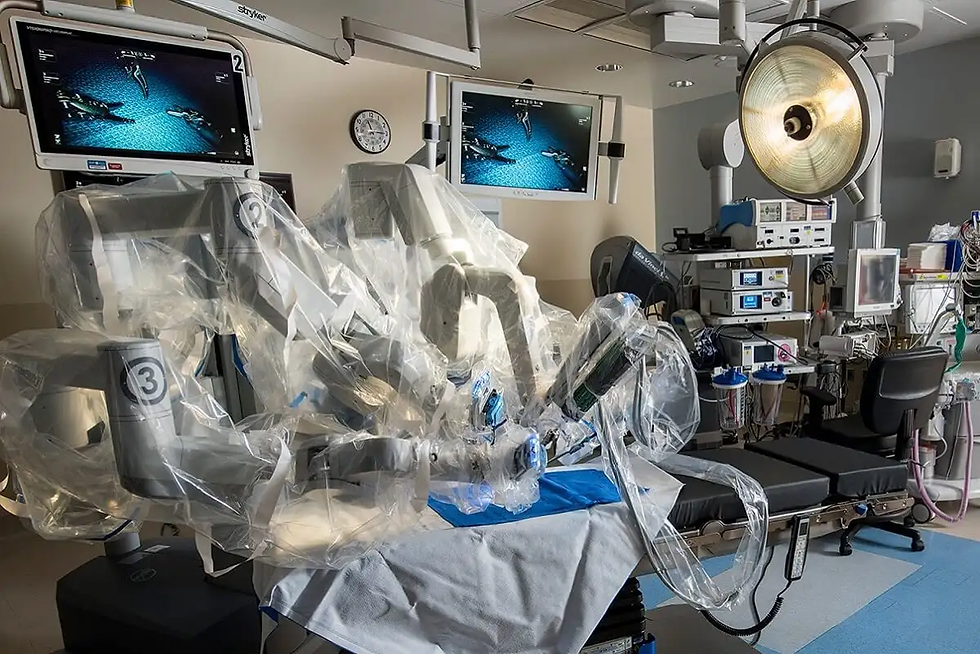EngineAI’s PM01: The World’s First Front-Flipping Robot
- TechTrek Admin

- Mar 31
- 3 min read
Updated: Jun 8
By Max Yao,
Eaglebrook School, MA
Early March 2025, in a landmark development in robotics, EngineAI recorded the historic achievement of having the first humanoid robot perform a front flip. The acrobatics of the PM01 robot confirm an enormous leap in dynamic balancing, motion accuracy, and human-like machine action. Backflips had been touted as the showpiece of robotic agility—one that was famously performed by Boston Dynamics' Atlas in 2017. Front flips are significantly more complex and difficult.

The complexity derives from the physics and mechanics of a front flip in itself. The forward rotation of the robot during the front flip makes it particularly challenging to reorient its center of gravity mid-air, unlike in a backflip. A backflip travels in a more instinctive arc—one that is aided by muscular actions or the propagation of torques that contribute to the rearward trajectory of the flip. Conversely, a front flip integrates an instantaneously calculated momentum. Since the robot has no visual input to assist it as it flips through the air, mid-air corrections necessary for a successful landing becomes even harder. The trick requires the robot to possess advanced foresight to pinpoint its landing area and then carefully calibrate its joint torque distribution to land successfully. This becomes an even more problematic idea in humanoid robotics since they strive to replicate the fluidity and strength that humans have accrued over years of training and evolution.
Equipped with advanced sensors continuously monitoring acceleration, torque, and balance, PM01 maintained stability throughout extremely fast and highly impactful movements. All these advancements combined allowed the PM01 to attain an astounding 30 percent improvement of precision in motion over able-bodied predecessors, thus classifying it as the most agile and accurate humanoid robot so far. The PM01's comparatively small and dynamic design also played a significant role in this accomplishment. At only 1.38 meters, it is shorter than its primary contemporaries, Boston Dynamics' Atlas, at 1.5 meters, and Unitree's H1, at 1.8 meters. However, with 23 degrees of freedom distributed in its arms, legs, and torso, PM01 had ample ranges of motion required for executing advanced stunts like the front flip. Its legs generated 221 lb-ft (300 Nm) of torque with their motors, supplying enough force to drive its body upward and forward with terrific precision to complete a perfect flip.

The engineers from EngineAI triumphed in overcoming various hurdles thanks to the seamless adoption of cutting-edge technology. At the nerve center of this victory lies an intelligent control system that is alive with deep learning algorithms at their sophisticated best. These algorithms have modeled thousands of motion sequences, optimizing each phase of robot movement from push-off to airborne rotation to landing. Coupled with advanced kinematic modeling, PM01 was able to calculate its center of gravity in real time while dynamically adjusting its posture for balance.
Though this outcome sets a precedent; it is still challenging to extend it into a much broader area of application. The intensive R&D costs to be incurred in making the PM01 concept prove prohibitive in duplicating this degree of precision in much more cost-effective models. Concerns cannot be sidestepped either on the ethical or practical fronts-these would include safety, privacy, and public trust-as robots begin to move more toward human societal assimilation. Still, EngineAI's achievement will be set in another level for robotics innovation because it demonstrated that with so much advanced technology, those complex human-like motions could very well be replicated.

A feat indeed that attests to the genius of engineers at EngineAI and also stretches the limits of what robots can really do. In balance and with all the intricacies of acceleration and precision, PM01 has done what for long was thought impossible. The perfect front flip from this robotic perfection sets a new benchmark for agility, leaving the door open for future machines that may perform even more sophisticated yet human-like tasks with grace and stability. This is a landmark that technology will carry on to shape future applications that will float up waves of new research, bringing us closer to futuristic machines moving, flipping, and working with humans with ease.
----Works Cited
DeepNewz. “EngineAI’s PM01 Achieves World’s First Front Flip in Shenzhen.” DeepNewz, 26 Feb. 2025,
deepnewz.com/china/engineai-s-pm01-achieves-world-s-first-front-flip-shenzhen-02224d71. Accessed 16 Mar.
2025.
Jijo Malayil. “World’s First Humanoid Robot That Performs Frontflip Unveiled in China.” Interesting Engineering, 24 Feb.
2025, interestingengineering.com/innovation/chinas-first-humanoid-robot-frontflip. Accessed 16 Mar. 2025.
Knutsson, Kurt. “Chinese Humanoid Robot Lands World’s First Front Flip.” Fox News, 8 Mar. 2025,
“South China Morning Post.” South China Morning Post, 24 Feb. 2025, www.scmp.com/tech/tech-
trends/article/3299920/robotic-acrobatics-chinese-start-impresses-worlds-first-frontflip-robot. Accessed 16
Mar. 2025.
“World First EngineAI Robot Performs Front Flip Accuracy Improved by 30 Percent.” Exportsemi.com, 2025,
percent/. Accessed 16 Mar. 2025.
%202_e.png)





Comments